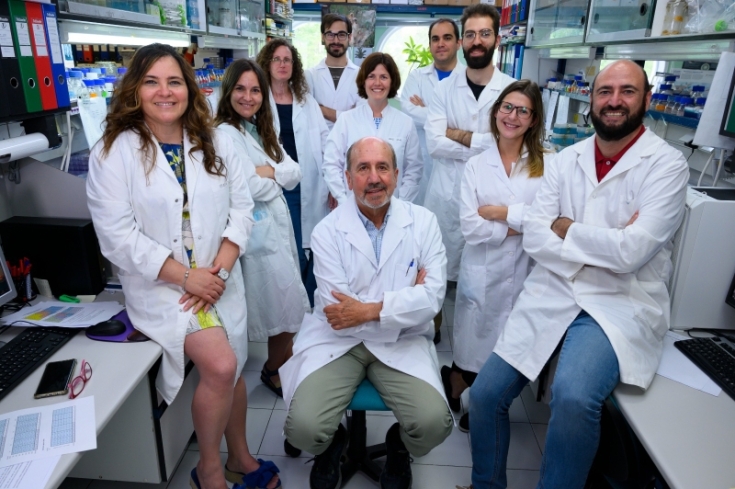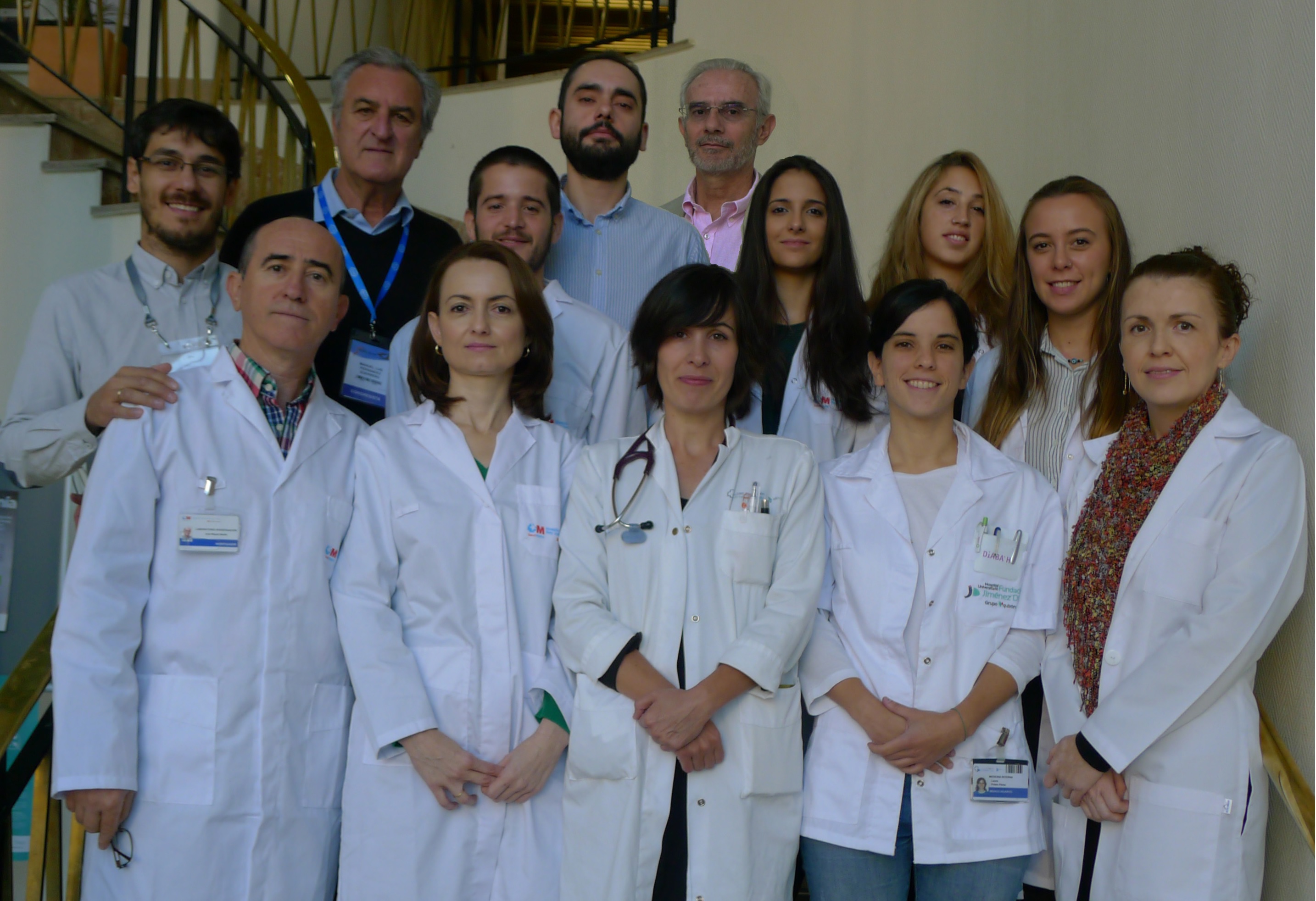Report | RNA and elite controllers: two keys to fighting HIV
The Covid-19 pandemic seems to have opened up a new door to find a treatment for the virus that causes AIDS. We spoke with the CSIC and Jiménez Díaz Foundation on the future of this research

There are nearly 40 million people living with AIDS around the world, and from the first case diagnosed in the United States in the 1980s, there have been almost 80 million in total. In 40 years, no cure has been found, despite the fact that biomedicine has never stopped trying. Quite the contrary, in fact, research has found an antiretroviral treatment (ART - a drug cocktail that reduces viral load to an undetectable level, although it is not a cure) that has drastically decreased mortality and morbidity in HIV-positive patients since 1995.
But finding a vaccine remains mission impossible, or nearly. The reason is simple, HIV, the virus that causes AIDS, is too complex and scientists keep ending up back at square one without a solution and without achieving more than a modest 30% efficacy rate, as explained Carmen Elena Gómez, a researcher in the Poxvirus and Vaccines Group at the National Centre for Biotechnology of the Spanish National Research Council (CNB-CSIC). “We’re fully aware that we’re fighting an uphill battle.”
Dr Elena is involved in developing and assessing vaccine candidates based on the poxvirus, both in lab animals (mice and primates) and in humans, to fight infectious diseases and cancer. For roughly 20 years, the researcher has been working on developing vaccine candidates to end HIV, which in the past decade has infected approximately 4,000 Spaniards a year despite prevention and awareness campaigns. They started in 2000 designing a recombinant vector based on a highly attenuated strain of the poxvirus, called MVA, which allowed them to express the virus antigens and was studied in Spain as a vaccine candidate in phase 1 clinical trials for prophylactic and therapeutic use.
The results were promising, but there was still room for improvement and they continued working to optimise the platform and test it in combination with the key new biotech tool of our time: RNA. “Just as AIDS research has helped us find a solution to the Covid-19 pandemic, thanks to the knowledge and technology we have put amassed, Covid-19 will help us with HIV”, the expert believes.
A virus that evades science
The virus that causes AIDS is complicated for three reasons. Firstly, there is a high degree of viral variability; secondly, it can insert its genetic material into the genome of the cells it infects establishing a latency period; and thirdly, no one has ever naturally recovered from the disease. Let’s take it in parts.
The virus binds very easily, thanks to the CD4 receptors and the protein envelope (like SARS-CoV-2), to our T cells, which are an essential part of our immune system. At that point, with these cellular mediators blocked by HIV, the body is a very easy target for other illnesses.
“Plus, it’s so varied that it is difficult to cover all of its viral diversity with just one immunogen”, explains Dr Elena. The virus reproduces unchecked and integrates so well into the cell DNA that it can lie dormant, not showing its face. “It infects the body at levels that can’t be detected by normal diagnostic tools”, the CNB-CSIC expert warns. “It’s true that we can keep it at bay with ART therapies, but we need to draw it out of the natural reservoirs”, she adds.
Another issue is that the scientific community doesn’t have any examples to go on in their search for a solution. “No one has ever recovered on their own. We don’t have a correlative reference of immunological protection to follow in coming up with a vaccine”, she notes. Animals don’t seem to help either, as the expert assures there are no models that reproduce the disease. Not even primates are necessarily predictive of what can happen in humans.
On top of this, there’s another barrier that goes beyond the virus itself. “What has failed over these years is that we haven’t had any continuity in terms of clinical trials and this is important if we want to find a vaccine. To compare, only six phase 2b or 3 clinical trials for efficacy in HIV were conducted before 2017; in just one year of SARS-CoV-2, we’ve already had 30. For AIDS, we also need a substitute and not to wait 10 years for another candidate”, the expert insists.
Biotech, the key to success
According to the scientist, new technology and scientific advances can finally help build a path for her research. One example is developing immunogens that can boost broadly neutralising antibodies. There is already a phase 1 clinical trial that has been proven to work in humans, with an immunogen that uses just a tiny part of the visible virus protein envelope to activate the B cells that are precursors to these antibodies and help them proliferate in the germline. “It is the first evidence, after all the failed vaccines, that we’re once again on a path that can have some sort of benefit”, the researcher hopes.
But is society aware of everything biotechnology can contribute to the fight against such a complex virus? Dr Elena isn’t so sure. Antiretroviral medicines took the spotlight away from the urgent need to find a vaccine. “People see that there’s something that works and has made a deadly disease into a chronic condition. They see that at least there’s something that can protect them”, she justifies. But for research, finding a preventive vaccine is essential to eradicating this pandemic that “also has its numbers”. In short, “we need to have a more steady flow, speed up and combine all the tools possible to reach a solution more quickly. I think we need to understand that everything we’ve learned from Covid-19 can be applied to HIV”, she concludes.
Norma Rallón, principal investigator and head of the research group on HIV and Viral Hepatitis in the Infectious Diseases Department at IIS-Jiménez Díaz Foundation, agrees with Dr Elena and hopes that the success of messenger RNA for SARS-CoV-2 has opened up a new path for this type of vaccines. “I think people can understand it better now, thanks to the push for research to find a vaccine for SARS-CoV-2. This may be opening up better chances to speed up research to find an HIV vaccine, too”.

What research is going on in the meantime?
While waiting to find the much hoped-for vaccine, Dr Rallón’s research group is involved in many projects that are looking for a functional cure for HIV.
One of them is to clarify the mechanisms behind the virus’ latency and better understand the viral reservoir as a fundamental step in designing treatment strategies to eradicate it. The idea is to find new strategies that could wake up infected cells that are latent, waking up the virus and pushing it out of its hiding spot. From there, the immune system and drugs could attack it. For now, unfortunately, Dr Rallón explains that the drugs tested so far haven’t managed to wake up even 1% of the latent virus. “We have to go back to the beginning and better understand the reservoirs to find new strategies to eliminate them”, the expert notes.
As we mentioned before, one of the main barriers is that there’s no immune protection correlate. But it turns out that, among HIV positive patients, there are some extraordinary cases known as ‘elite controllers’, who are able to keep the virus at bay without any medication. Although these cases only make up 0.5% of all known patients, they are key to AIDS research and one of the strengths of Dr Rallón’s team, which is using them as a model for a functional cure. “We know that these patients have an effective, polyfunctional immune response. Or in colloquial terms, these patients have a whole arsenal of weapons to fight the virus, while others have just one. We know that combining weapons, like we do with the drugs, is key in fighting HIV”, the expert explains.
One of these weapons, which is part of one of the most novel studies the group is working on, is molecules that travel from one cell to another through extracellular vesicles (known as exosomes). Their goal is to identify which molecules are in the exosomes of elite controllers and compare them to the exosomes of the rest of the patients, who need pharmacological treatment to control the virus. “Once we know this, we could design therapeutic strategies to replicate what we see in elite controllers in patients, using these vesicles as a Trojan horse to transport antiviral molecules. And this could work for HIV as well as other diseases, like cancer, where the exosomes are a very promising alternative for immunotherapy”, the researcher says.
Another strategy Dr Rallón mentions is searching for a therapeutic vaccine that could give patients a functional cure that would mean they don’t have to take drug treatments. “The idea is that therapeutic vaccination boosts the body’s immune response to the virus and gives the patient enough weapons to fight the virus, so they don’t need the medications any more”, she affirms.
“Finally, as a reflection, it is important to take into account that the Covid-19 crisis can distract us from the fact that HIV has also been an active pandemic for 40 years now, and that cases are increasing every year”, the experts concludes, in line with what Carmen Elena of CNB-CSIC said.
More than five AseBio members are working to find solutions to HIV. Check out their work here.
By Agathe Cortes and Raquel Álvarez
Foto 1: CNB-CSIC and Carmen Elena on the left
Foto 2: Norma Rallón's teams (she's on the right)





